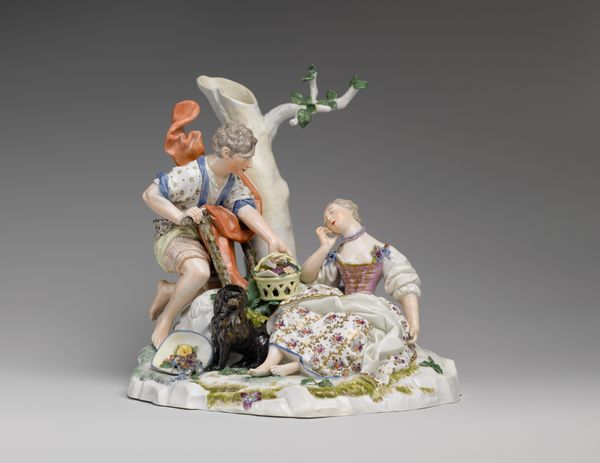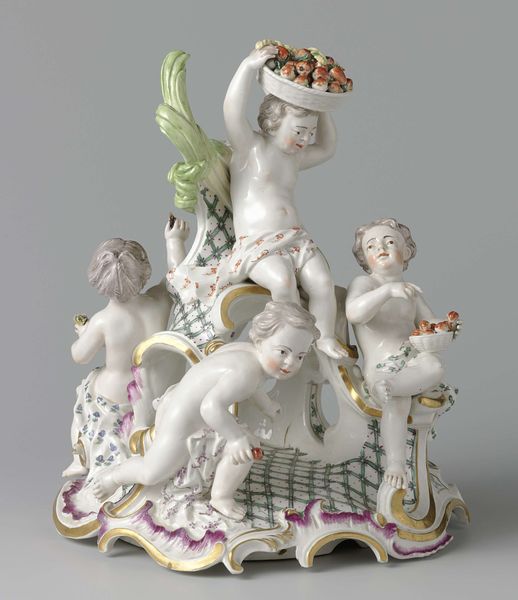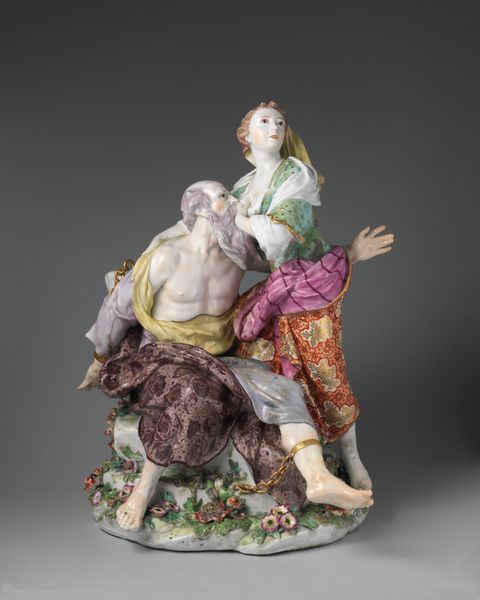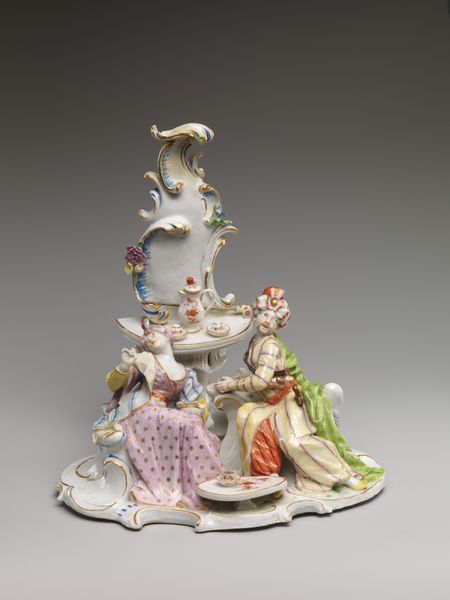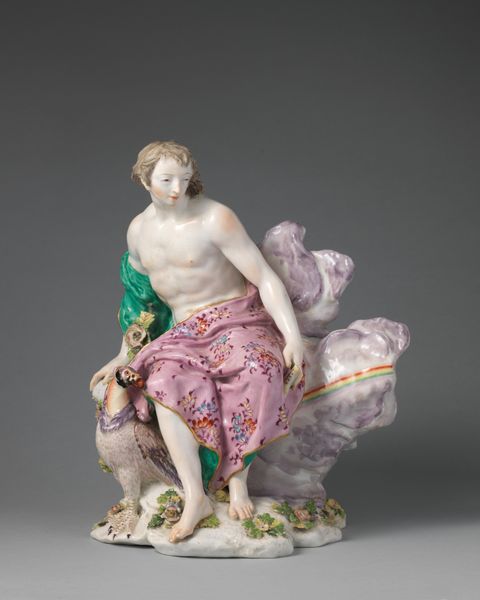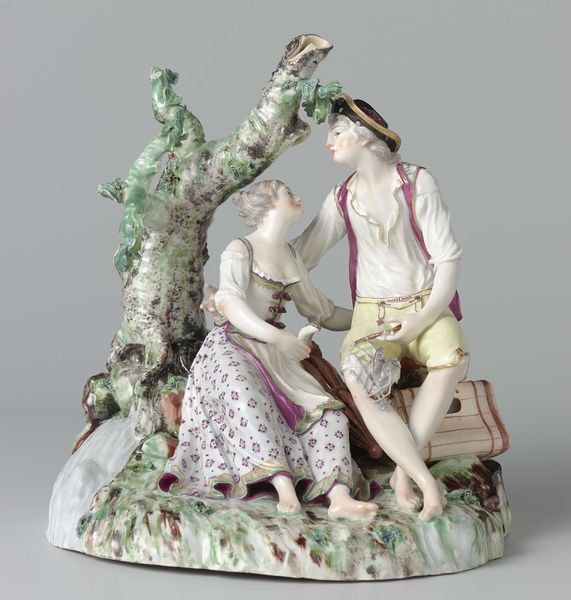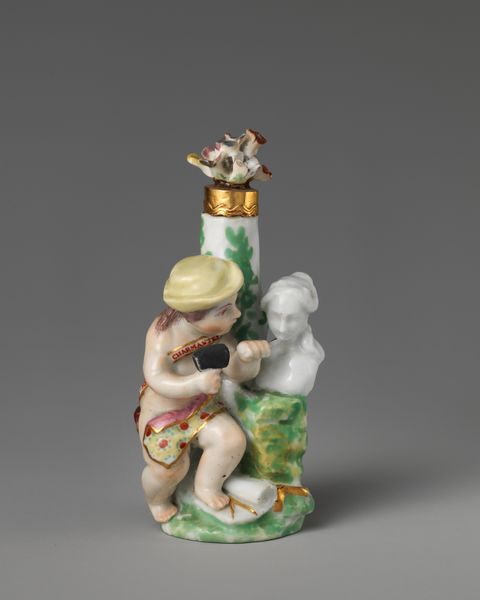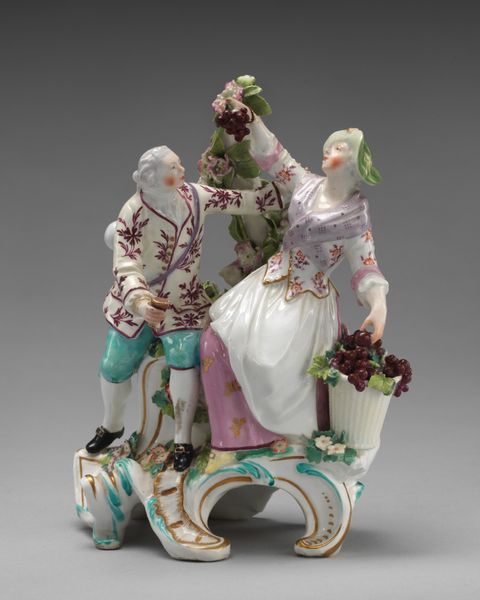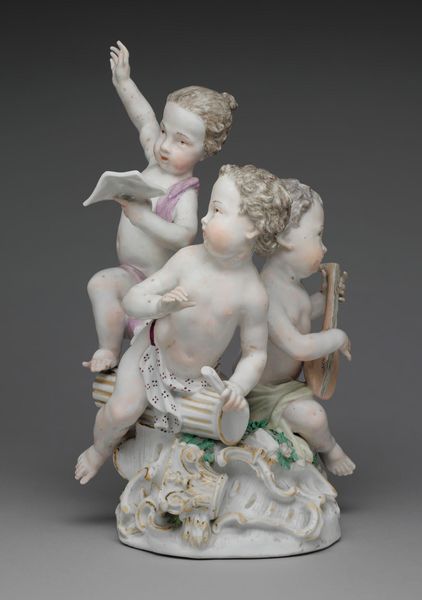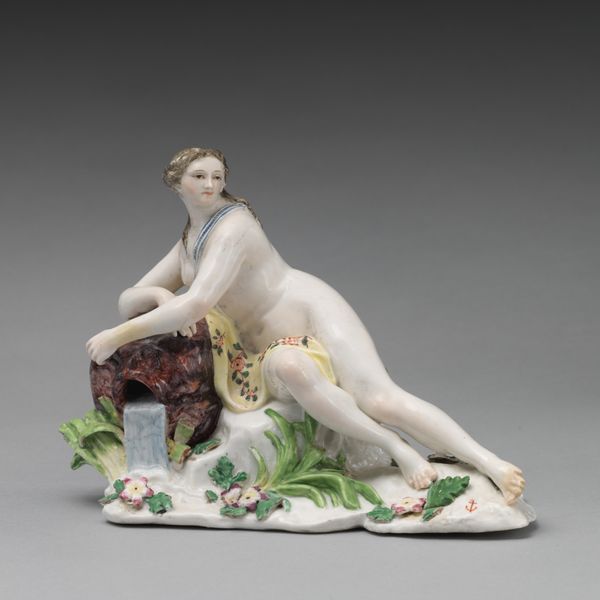
ceramic, porcelain, sculpture
#
narrative-art
#
ceramic
#
porcelain
#
figuration
#
sculpture
#
ceramic
#
genre-painting
#
decorative-art
#
rococo
Dimensions: H. 22.2 cm (8 3/4 in.)
Copyright: Public Domain
Curator: I’m immediately struck by the scene’s almost saccharine sweetness. It’s like a confection. Editor: Quite a good entry point. What we are looking at is a porcelain sculpture, tentatively titled "Group: Hunters or Lovers," dating back to around 1765, and currently residing here at The Art Institute of Chicago. What fascinates me about pieces like this is how it reflects the aristocracy's romanticized view of leisure. Curator: I see your point, this piece reeks of the era's fanciful escapism! It's all so deliberately staged—the placement of the figures, the delicate coloring, the little dog. There’s this carefully constructed artificiality. Editor: Precisely. Look closer, we see it tells us much about gender roles in that historical context. The hunter, complete with his rifle, embodies traditional masculinity, while the woman reclines passively. This juxtaposition reveals prevailing social norms of power and submission. Do you see any tension arising in its status of decorative art? Curator: Yes, the use of porcelain is certainly loaded, given how this art form became prevalent among the European upper classes. Its association with luxury and fragility contrasts starkly with the themes of the hunt or rural life that it aims to represent. It’s a world carefully controlled, aestheticized and then put on display as a kind of trophy. Editor: I agree. The artist, unfortunately anonymous to us, seems almost to be presenting a moral fable. I am interested, how might an indigenous perspective react to this representation of nature, particularly given that this piece likely would have circulated through colonialism. Curator: That’s an excellent point, and underscores the limited and class-bound view of "nature" that pieces like this presented. What seems romantic to a privileged eye is almost certainly removed from real conditions on the ground. Editor: This piece definitely gives me so much to think about when looking at the intersection between the decorative arts, colonialism and power during that time. Curator: Absolutely. Considering this piece within that broader framework highlights the necessity to contextualize even the seemingly most harmless object.
Comments
No comments
Be the first to comment and join the conversation on the ultimate creative platform.
